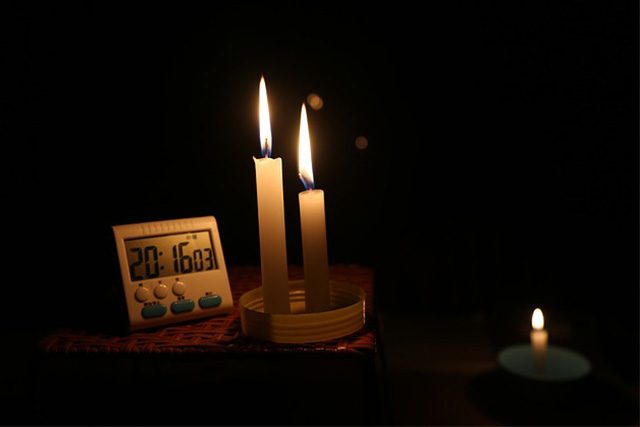The public aired their frustrations as power interruption hit parts of Luzon after the grid was placed on “red alert,” meaning there was insufficient electricity supply.
The alert was raised as seven power plants were forced outage, while three others were running on derated or reduced capacities, the National Grid Corporation of the Philippines said.
This resulted in 3,627 megawatts lost from the Luzon grid.
Filipinos shared how the rotational blackouts have caused them inconvenience, especially those who work and attend school.
“Toinks! Paano na lang ang mga may online class nyan?” a Facebook user wrote.
“Paano mag-tatrabaho mga tao nako,” a Twitter user asked.
“Two a.m. na ng madaling araw wala pa din ilaw maawa naman kayo sa mga bata at sa may sakit at meroon trabaho, perwesyo kayo sa tao,” a Facebook user appealed.
“Nakakapagod na sa kakapaypay. Kung ganyan kayo babaaan niyo na singil sa kuryente,” she continued.
The power rate increased this month to P0.3907 per Kwh from August rates due to higher fuel costs and a weaker peso, Manila Electric Company said. This means an additional payment of ₱78 per 200 kWh.
Price hike, supply woes
The electric price hike and supply woes add to the list of commodities that causes pain in the public’s pocket.
“An energy crisis, a food crisis, inflation… #GoldenEra, indeed,” an online user said.
“Pati sa kuryente my shortage, what’s next?” a Facebook user asked.
Recently, some Filipinos have also expressed concerns over reports about the country’s shortage of garlic and onion.
READ: ‘Walang guisado?’: Garlic, onion shortage makes Filipinos cry
There is also a reported issue in the supply of sardines.
Although different sectors have varying remarks, the suggested retail price for canned sardines in tomato sauce increased by 6%, according to the Department of Trade and Industry’s (DTI) latest price bulletin.
Salt prices have also increased. DTI’s figures showed that a kilogram of rocksalt now costs P23 from P21.50 last year, while the iodized salt price increased from P25.75 in 2021 to P29 this year.
READ: ‘What’s next?’: Questions aired amid reported sardines, salt supply shortage
DoE investigation
The power interruptions yesterday prompted the Department of Energy (DoE)to investigate.
“We assure the public that the DoE is verifying the cause of the forced outages this morning as there appear to be no fuel supply constraints. A team from the DoE will conduct actual physical spot checks and validate the condition of the transmission lines and the affected power plants,” Energy Secretary Raphael Lotilla said in a statement issued via Viber.
Last month, the agency assured the public that there is enough power supply for the next six months due to cool weather.
READ: Power reserves enough for next 6 months – DOE
Although a temperature rise during the dry season and higher electric demand may affect the country’s power reserve, the agency noted.
“Right now, we have enough reserves for the next six months, the cooler months. Though hopefully, no major breakdowns of plants,” Energy Secretary Raphael Lotilla said.
“But during the summer months, I have to tell you that I’m beginning to have concerns about that,” he said.
Lotilla also stressed the need for the country to shift to hybrid systems and end its overdependence on petroleum and petroleum-based fuels.
“Because otherwise we will always experience the volatilities in prices,” he said.










